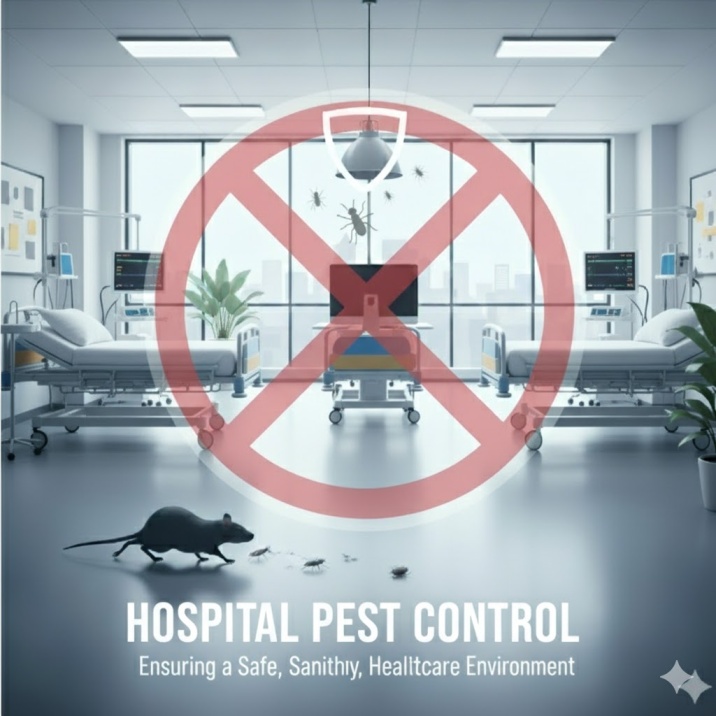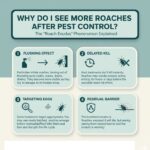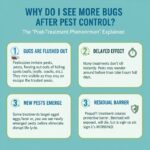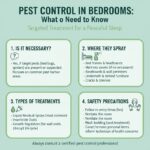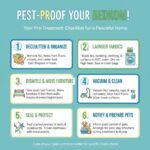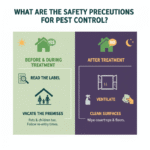Hospitals are places where hygiene and safety are critical. Even a small pest problem can compromise patient care, spread germs, and affect the hospital’s reputation. This makes hospital pest control services important for keeping patients, staff, and visitors safe. Pests not only pose health risks but can also damage equipment, contaminate food, and create an unsanitary environment that affects staff efficiency and patient confidence.
Why Hospital Pest Control is Important in Cincinnati
Hospitals face unique challenges when it comes to pests. Unlike homes or offices, hospitals have areas that require absolute cleanliness and sterilization, such as operating rooms, patient wards, and pharmaceutical storage. Pests like rodents, cockroaches, and flies can carry bacteria and viruses that threaten these sterile zones.
Effective hospital pest management ensures:
- Patient Safety: Reduces the risk of infection and disease spread.
- Staff Health: Minimizes allergens and potential bites or scratches from rodents or insects.
- Regulatory Compliance: Maintains standards set by health authorities to avoid penalties.
- Facility Protection: Prevents damage to medical equipment, wiring, and storage areas.
Hospitals cannot afford to ignore pest problems. Even minor infestations can escalate quickly, which is why a proactive approach is crucial.
Common Pests in Hospitals
Hospitals attract a variety of pests due to food sources, waste, and high human activity. Some of the most common hospital pests include:
- Rodents: Rats and mice are known to gnaw on wires and equipment, damage infrastructure, and spread diseases such as salmonella and leptospirosis.
- Cockroaches: These pests carry pathogens and allergens. They are especially dangerous in kitchens and patient areas where food is prepared or consumed.
- Flies: Flies can transfer bacteria from waste to sterile areas or patient meals. They are particularly common around garbage and drainage areas.
- Ants: While small, ants can contaminate food, medication, and surfaces. Certain species can even damage hospital equipment.
- Bed Bugs: Though not disease carriers, bed bugs are a nuisance that causes discomfort, stress, and skin irritation for patients and staff.
Understanding these pests is the first step toward preventing infestations. Hospitals need tailored strategies depending on the type of pest and the area affected.
How Pests Enter Hospitals
Preventing pests starts with knowing how they gain entry. Hospitals are large facilities with multiple entry points, which makes vigilance essential. Common ways pests enter include:
- Open doors and windows
- Delivery areas and loading docks
- Gaps or cracks in walls and ceilings
- Improperly sealed food storage and waste bins
- Staff or visitors inadvertently bringing pests in on clothing or equipment
Even a single entry point left unmonitored can lead to a full-scale infestation over time. Understanding the signs of a pest problem helps identify potential issues early before they escalate.
Effective Strategies for Hospital Pest Control in Cincinnati
Routine checks help catch infestations early and identify signs of a pest problem, so you know when it’s time to hire a professional. Hospitals need a comprehensive pest control plan that combines multiple strategies.
1. Regular Inspections
Frequent inspections of all hospital areas, including kitchens, waste disposal zones, patient rooms, and storage areas, help detect early signs of pests. This proactive approach reduces the risk of large infestations and limits the need for intensive treatments later.
2. Sanitation and Waste Management
Proper cleaning and waste management play a major role in pest prevention. Hospitals should:
- Empty trash bins frequently
- Keep kitchens and cafeterias spotless
- Store food in sealed containers
- Ensure drainage systems are clean and free of debris
Sanitation reduces the availability of food and water, which are major attractions for pests.
3. Professional Hospital Pest Control Services
Hiring Pest Control Cincinnati professionals ensures that treatments are both safe and effective. Hospital pest control experts use methods designed for healthcare environments, which avoid contaminating sensitive areas. This also highlights the benefits of pest control services, such as targeted treatments, minimal chemical usage, and ongoing monitoring.
4. Integrated Pest Management (IPM)
IPM is a holistic approach that combines prevention, monitoring, and treatment to manage pests efficiently. Hospitals often use pest control methods such as:
- Baiting and traps
- Safe insecticides and rodenticides
- Environmental modifications to eliminate hiding spots
IPM reduces chemical exposure while keeping infestations under control.
5. Staff Awareness and Training
Educating staff about proper hygiene, food storage, and pest reporting is a critical part of hospital pest control. Trained staff can help maintain a pest-free environment by noticing early signs and taking immediate action.
Choosing the Right Hospital Pest Control Service in Cincinnati
Selecting the right provider is crucial. Hospitals should look for companies that:
- Use chemicals approved for healthcare facilities
- Customize plans for different hospital areas
Follow strict safety protocols - They provide services for urgent situations, including emergency pest control services for sudden infestations.
Professional hospital pest control services help hospitals stay compliant with regulations and maintain patient confidence.
Maintaining a Pest-Free Hospital in Cincinnati
After treatment, ongoing monitoring and good hygiene practices help prevent future infestations. Hospitals should implement regular inspections, keep patient areas clean, and ensure waste is properly managed. Understanding how long pest control treatments remain effective and planning follow-ups is key to maintaining a long-term solution.
FAQs About Hospital Pest Control Services
-
Why is pest control essential in hospitals?
Pests can spread bacteria, contaminate equipment, and put patients and staff at risk. Proper control ensures a safe environment.
-
How often should inspections happen?
Inspections should be routine, especially in high-risk areas like kitchens, storage, and patient rooms. The effectiveness depends on the treatment method used.
-
Are the treatments safe for patients?
Yes, hospital pest control professionals use chemicals approved for healthcare facilities.
-
Can pests come back after treatment?
Yes, pests can return if conditions allow. Understanding whether pests can return after treatment helps hospitals plan ongoing control measures.
-
What is integrated pest management?
Integrated pest management combines prevention, monitoring, and targeted treatment to control pests while minimizing chemical use.
-
How much does pest control cost for hospitals?
Costs vary depending on the size of the facility and the treatment required. Information about pest control costs can help with budgeting.
-
What are the first signs of a pest problem in a hospital?
Droppings, gnawed wires, food contamination, and insect sightings are common indicators. Noticing these early can prevent larger infestations.

